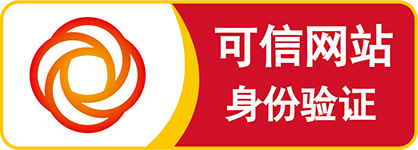口服褪黑素加入的多模式抗焦虑治疗策略可减轻患儿急性谵妄,而咪达唑仑无此作用:一项随机、双盲、安慰剂对照研究
本文由“罂粟花”授权转载
口服褪黑素加入的多模式抗焦虑治疗策略可减轻患儿急性谵妄,而咪达唑仑无此作用:一项随机、双盲、安慰剂对照研究
贵州医科大学 麻醉与心脏电生理课题组
翻译:佟睿 编辑:潘志军 审校:曹莹
背景
术前焦虑是儿童出现急性谵妄的危险因素,包括应用镇静剂及非药物措施在内的多模式方式是目前解决这种谵妄的策略。口服褪黑素作为多模式抗焦虑策略的一部分,用以减轻急性谵妄的有效性还没有得到深入研究。
目的
本研究旨在评估应用包括口服褪黑素或咪达唑仑在内的多模式抗焦虑策略对减少七氟烷麻醉后的急性谵妄的效果。
方法
试验设计:一项随机、双盲、平行分组、安慰剂对照试验。
范围设置:2019年7月至2020年1月三级教学医院内的患儿。
受试人群:接受七氟醚麻醉下拟进行择期门诊手术的3-8岁患儿。
干预因素:患儿随机接受口服褪黑素0.3 mg kg-1、咪达唑仑0.3 mg kg-1或等量蜂蜜作为安慰剂。所有的孩子都接受了相同标准的非药物措施,包括多种缓解焦虑的技术,并在麻醉中使用了统一标准进行质控。
主要观察指标测定:主要观察指标是在术后恢复室中使用Watcha量表评估的急性谵妄发生率。次要观察结果包括采用改良的Yale术前焦虑评定量表评估患儿术前焦虑、使用诱导依从性检查表检查患儿对面罩诱导的依从性以及患儿术后镇静评分。
结果
我们对132名儿童的数据进行了分析。与安慰剂相比,褪黑素显著降低了急性谵妄的发生率:分别为27%和50%,绝对风险降低23.3[95%可信区间3.7~42.9],P=0.03。与咪达唑仑相比,褪黑素也显著降低了出现急性谵妄的风险,分别为27%和56%,绝对风险降低29.2(95%可信区间9.5~48.8)。咪达唑仑组与安慰剂组出现急性谵妄的发生率相似。三组患儿术后镇静评分相似。三组患儿术前焦虑的发生率、镇静评分以及对面罩诱导的依从性相似。
结论
与口服咪达唑仑不同,加入口服褪黑素的多模式抗焦虑策略显著减少了七氟烷麻醉后出现的急性谵妄。
原始文献
Lily Singla, Preethy J. Mathew, Aditi Jain, et al. Oral melatonin as part of multimodal anxiolysis decreases emergence delirium in children whereas midazolam does not: A randomised, double-blind, placebo-controlled study.[J].Eur J Anaesthesiol2021;38:1130–1137.
Oral melatonin as part of multimodal anxiolysis decreases emergence delirium in children whereas midazolam does not: A randomised, double-blind, placebo-controlled study
Abstract
BACKGROUND Pre-operative anxiety is a risk factor for emergence delirium in children and a multimodal approach including sedatives and nonpharmacological measures is the current strategy to tackle this anxiety. The efficacy of oral melatonin as a component of multimodal anxiolytic strategy to decrease emergence delirium is not well studied.
OBJECTIVE The aim of this study was to evaluate the efficacy of a multimodal anxiolytic strategy including oral melatonin or midazolam to decrease emergence delirium after sevoflurane anaesthesia.
DESIGN A randomised, double-blind, parallel arm, placebocontrolled trial.
SETTING Tertiary care teaching hospital from July 2019 till January 2020.
PARTICIPANTS Children in the age group of 3 to 8 years who received sevoflurane anaesthesia for elective ambulatory procedures.
INTERVENTIONS Children were randomised to receive oral premedication with either melatonin 0.3 mg kg-1, midazolam 0.3 mg kg-1 or honey as placebo. All the children received standardised nonpharmacological measures involving multiple techniques to allay anxiety. The anaesthetic plan was also standardised.
MAIN OUTCOME MEASURES The primary outcome was the incidence of emergence delirium as assessed by the Watcha scale in the postanaesthesia care unit. The secondary outcomes were pre-operative anxiety assessed using a modified Yale Preoperative Anxiety scale, patient compliance with mask induction using the Induction Compliance Checklist and postoperative sedation.
RESULTS Data from 132 children were analysed. Melatonin significantly reduced the incidence of emergence delirium compared to placebo: 27 vs. 50%, respectively, an absolute risk reduction of 23.3 [95% confidence interval 3.7 to 42.9), P=0.03]. Melatonin also significantly reduced the risk of emergence delirium compared with midazolam: 27 vs. 56%, respectively, an absolute risk reduction of 29.2 (95% CI 9.5 to 48.8). The midazolam group had a similar incidence of emergence delirium as placebo. Sedation scores were similar in the three groups postoperatively. The incidence and score of pre-operative anxiety as well as the compliance with mask induction were similar in the three groups.
CONCLUSIONS A multimodal anxiolytic approach including oral melatonin, as opposed to oral midazolam, significantly reduced emergence delirium after sevoflurane anaesthesia
主要内容重点围绕“十四五”期间,如何优化全省医疗卫生资源配置,建设高质量医疗服务体系等方面,提出科学具体、现实可行的意见建议。
杭州市有关部门于近期正式批复,同意富阳区第一人民医院挂牌“浙大城市学院医学院附属第一医院”。
护理部结合医院实际情况,首批选取了伤口换药、新生儿护理、造瘘护理等11个风险低、需求大的服务项目开展试行。






